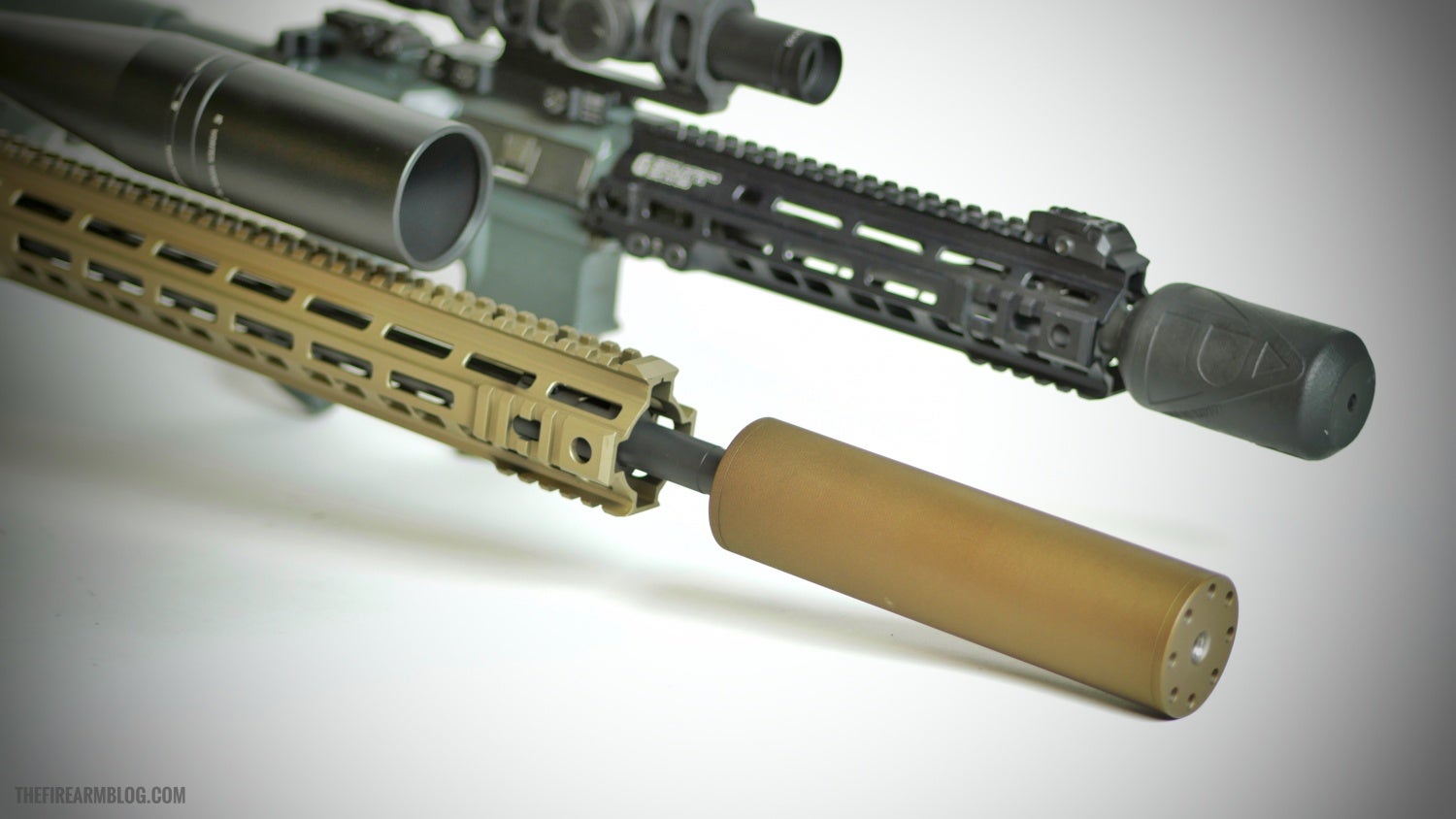
Silencer: Gas Regulation And You
Last week we talked about some upcoming decibel metering tests of popular suppressors along with a few of the more unique commercially available models. Since then, I have been reading up on the proper use of a meter and some standardized testing practices (no, not like the SAT). Luckily I have a few experts on standby to assist in the trials. This week I thought we should discuss gas regulation when it comes to suppressing direct impingement (DI) rifles; specifically the AR15 and its variants.
Silencer: AR15 Gas Regulation
When it comes to suppressing semiautomatic rifles, the AR15 has to be at the top of the favorites list. And, to add another fictional data point to the mix, I’d be willing to be that that short barreled ARs are suppressed more often than longer barreled ARs. But, while both the AR15 and the silencer have enjoyed a huge spike in popularity in recent years, it is still relatively rare to hear shooters discuss the topic of gas regulation.
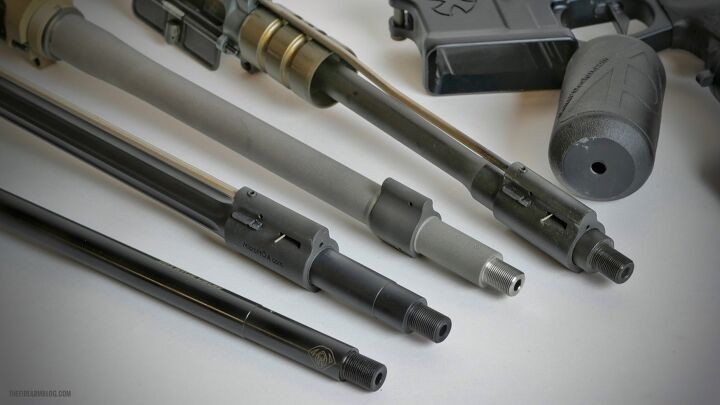
Here’s the basics as told by a non-expert: A DI AR15 functions using a system where gases in the barrel are redirected through a port, a block, then a tube that leads to the a gas key on the bolt carrier. Those gases push the bolt carrier rearwards, cycling the action. Adding a suppressor to this system can cause more gases to be forced down the barrel and into the action, increasing cyclic rates, fouling, heat and other forces that can effect the reliability of the weapon system.
The commonly used term is “backpressure” – the gases that should have exited the barrel are instead redirected into the DI system. Different silencers handle gas in different ways – large volume models can sometimes handle the extra gas without pushing it back into the action. And internal geometry and baffle design, bore diameter, and overall length can all effect gas management in an AR15.
Different gas-system lengths come into play as bullets move down their barrels, reducing the pressure behind them. A longer gas tube corresponds to a gas port placed farther down the barrel (toward the muzzle), yielding lower port pressures, since there is more room for the expanding gases behind the bullet as it passes the gas port. Once the bullet leaves the muzzle, pressure drops off. Therefore, a gas port closer to the muzzle reduces the amount of time that highly pressurized gas has to act on the operating system after the bullet passes the port, usually referred to as “dwell time.”
Steve Adelmann – Shooting Illustrated, September 24, 2014
Using a barrel with a short dwell time (usually meaning a mid-length or rifle-length gas system) can offset the addition of a suppressor by offering reduced gas port pressures. Unfortunately, reduced dwell times can make a rifle more “finicky” (technical term) when using certain buffer and spring combinations and ammunition varieties.
Much like an unsuppressed rifle, a gas system of a suppressed rifle can be mitigated durning the build phase. People smarter than myself can take a barrel length, gas system and silencer an determine a gas port size that will function the rifle reliably.
A more likely scenario involves an “off the shelf” rifle that can switch between suppressed and unsuppressed fire reliably by controlling the gas entering the system. Starting closest to the gas port, one of the most popular options is an adjustable gas block that acts as a gate for gas flow.
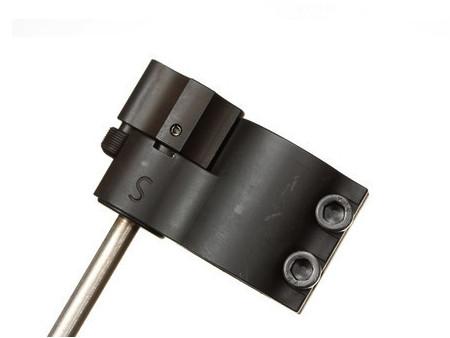
Noveske Switchblock – The Clamp-On Switchblock® is a complete assembly with gas tube for use on barrels that are .750″ diameter at the front sight. Each Switchblock® model is designed for a specific caliber, barrel length, and gas system length.
Moving down the gas tube, Innovative Arms makes an upper receiver that includes a regulator switch that controls gas flow before reaching the action.
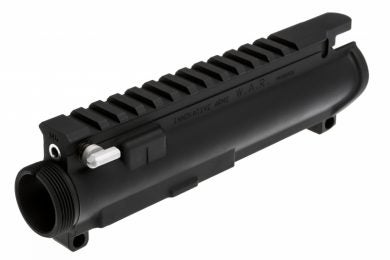
Innovative Arms WAR Upper: The Killswitch® of the W.A.R. is built directly into the upper receiver, meaning that you never unshoulder the rifle or use any tools. The adjustment can even be made in the dark. You can quickly and easily switch from suppressed to unsuppressed, or leave it in between the two settings to shut “off” the gas to manually cycle the rifle, all while keeping the rifle on your target.
And companies like Gemtech, 2A Armament and Bootleg Inc., make gas-adjustable bolt carriers that regulate flow at the gas key, directing the energy towards cycling the action or out and away from the system depending on a screw adjustment.
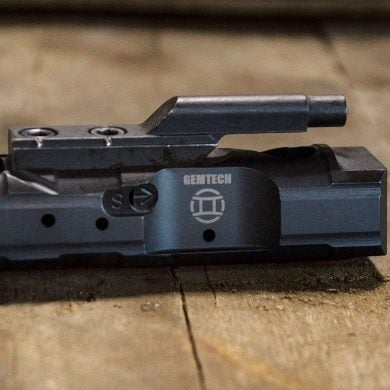
Gemtech Suppressed Bolt Carrier: The GEMTECH Suppressed Bolt Carrier is a drop-in replacement and will allow the shooter to choose between suppressed (S) and unsuppressed (U) settings without any permanent modifications to the firearm. No longer will you need to change gas blocks, buffers, or any other components. Not only that, but with the GEMTECH Suppressed Bolt Carrier, there is a reduction in carrier speed and less felt recoil, bringing the cyclic rate of the suppressed rifle down to unsuppressed levels.
The alternative choice, used by many shooters is to ignore gas regulation and instead alter recoil buffer and spring weights in an attempt to keep the system closed longer and slow the cyclic rate. Although this method is usually cheaper and easier, it does present some drawbacks. Perceived recoil can be heavier, more reciprocating mass means more wear and tear on internal parts and since more gas is entering the system, increased fouling can occur.
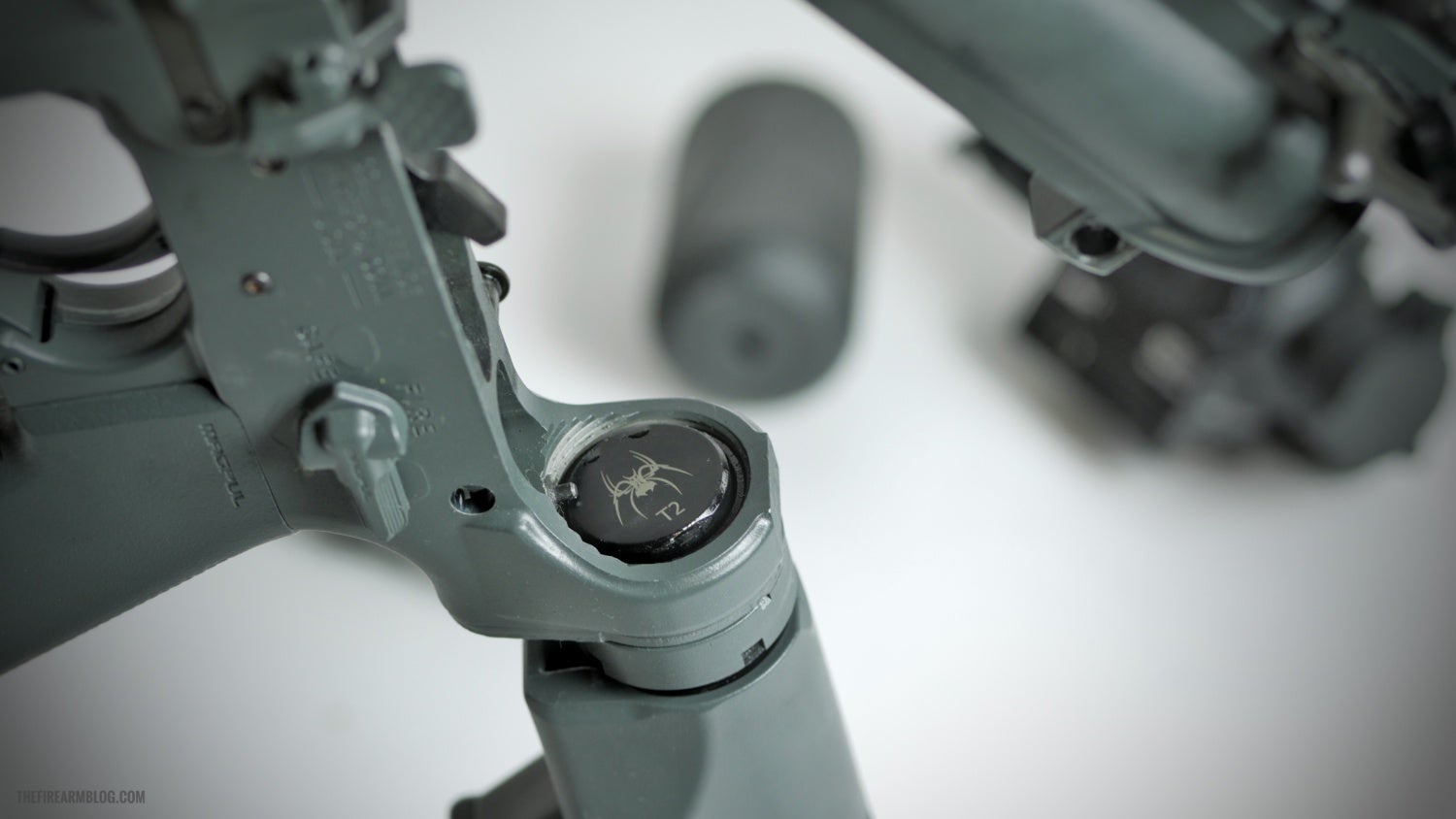
Unfortunately, there is not a single “best choice” for preparing an AR15 for running suppressed. As with everything in the shooting world, much of the decision process will rely on the “mission” requirements of you and your rifle and your style of shooting. And many times we just have to live with a little extra gas hitting us in the face.
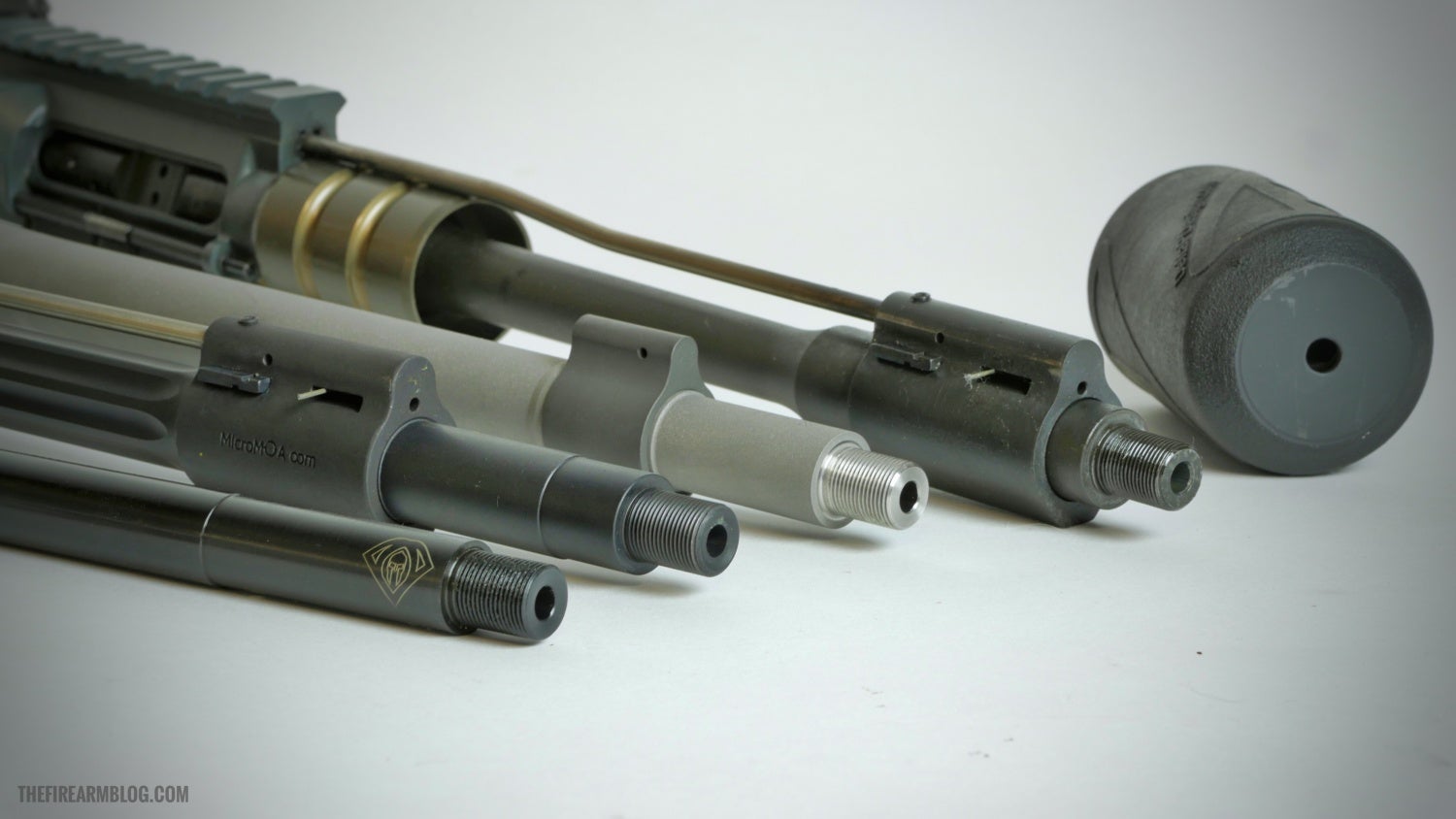
When it comes to suppressing the AR15 in 5.56x45mm, I’m a sucker for a top shelf, mid-length gas system barrel between 11′ to 12.5″. The a shorter barrel helps to keep the overall length down to manageable levels with a silencer and mount attachment, the added length over a 10.3″/10.5″ barrel helps with increased bullet velocity and better/more efficient powder burn inside the barrel, and the mid-length gas makes for a smooth shooting rifle.
Pictured above from left to right (check out the differences in gas port sizes):
1. Dynamic Defense 12.5″ Sierra with a mid-length gas system (In for TFB Review).
- https://dynamicdefensedevelopment.com/product/sierra/
- Barrel Length: 12″ (measured from bolt face)
- Caliber: .223 Wylde
- Gas System: Mid-Length
- Material: 41v50
- Twist Rate: 1:8
- Treatment: Melonite
- Precision M4 Extension
- 0.625″ Gas Block Size
- Dimpled for Gas Block
- Weight: 1lb 3oz
- .078″ Gas Port
- MSRP: $299
2. MicroMOA 17.3″ with rifle-length gas system (out of production)
3. Noveske 12.5″ Diplomat with a mid-length gas system
4. Daniel Defense MK18 10.3″ with carbine-length gas
- https://danieldefense.com/cold-hammer-forged-barrels/10-3-inch-chf-barrels/10-3-5-56mm-carbine-1-7-government-profile.html
- Cold Hammer Forging of barrels has been known for decades to produce the most accurate, longest lasting rifle barrels obtainable. The Cold Hammer Forging of barrels is accomplished through intense hydraulic pressure applied at opposing angles by carbide steel hammers. During the hammering process, a mandrel is inserted into the bore while the carbide steel hammers shape the barrel around the mandrel creating the chamber, the lands, and the grooves. In addition to the aforementioned benefits, the Cold Hammer Forging process creates a defect free bore and the most consistent chamber possible.
- .083″ Gas Port
- MSRP: $289
Something to consider if you are in the market for a new silencer: A few manufacturers are starting to design suppressors specifically to address back pressure, which could eliminate the the need for any additional gas regulation.
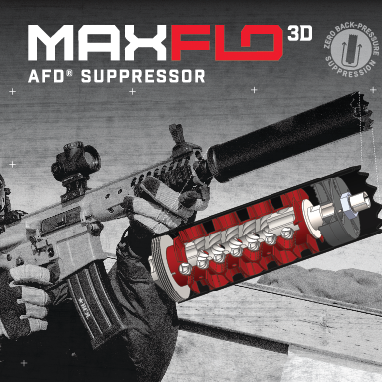
NexGen2 MaxFlo3D: NEXGEN2 Defense (NG2) has brought new suppression technology to the market with their MAXFLO 3D™. Utilizing “Advanced Flow Dynamics™ (AFD)” Zero Back-Pressure Suppression™ technology. The MAXFLO 3D rewrites the rules in firearms suppression. Rather than start with existing designs, NG2 erased the template and started from scratch. The result changes the game in firearms suppression. The MAXFLO 3D™ virtually eliminates all of the major issues common with firearms suppressors, back-pressure, first round “pop” and flash, accuracy robbing turbulence, recoil, excessive heat buildup, and more.
Suppressing the AR15 makes shooting fun and enjoyable, especially reducing the blast and concussion on short barreled rifles. By regulating gas, you can make your rifle an excellent silencer host.
